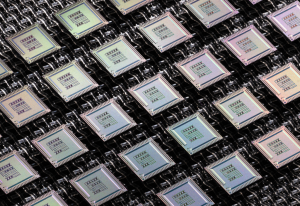SANTA CLARA — In a celebration of innovation in the film industry, three NVIDIA researchers have been honored with prestigious Scientific and Technical Awards by the Academy of Motion Picture Arts and Sciences. For 16 years, NVIDIA technologies have powered the visual effects behind every Academy Award-nominated film in the Best Visual Effects category, and this latest recognition underscores the company’s pivotal role in shaping modern cinematic storytelling.
Essex Edwards, recognized with a Technical Achievement Award alongside colleagues James Jacobs, Jernej Barbic, Crawford Doran, and Andrew van Straten, led the design and development of Ziva VFX. This breakthrough system offers artists an intuitive, physics-based approach to constructing and simulating human muscles, fat, fascia, and skin for digital characters. With its robust solver and artist-friendly interface, Ziva VFX has transformed how studios create photorealistic animated characters on screen. Edwards reflected on the project, noting, “Ziva VFX was the result of a team of artists and engineers coming together and making thousands of really good small design decisions over and over for years.”
Fabrice Rousselle received a Scientific and Engineering Award for his work on Disney’s ML Denoiser, developed in collaboration with Thijs Vogels, David Adler, Gerhard Röthlin, and Mark Meyer. This cutting-edge machine learning denoiser employs a kernel-predicting convolutional network to ensure temporal stability in rendered images. Initially crafted to enhance the quality of animated films, the denoiser has become an essential tool in both live-action visual effects and high-end rendering workflows. Since its inception in 2018, Disney’s ML Denoiser has been utilized in over 100 films, including blockbuster hits such as Toy Story 4, Ralph Breaks the Internet, and Avengers: Endgame.
Technical Achievement Award winner Timo Aila, alongside Attila T. Áfra, was recognized for his pioneering contributions to AI-driven image denoising. Aila played a crucial role in the early development of the U-Net architecture, which has proven instrumental in removing noise while preserving intricate details in images. This breakthrough has not only led to cleaner, more realistic images in rendering pipelines but has also been adopted in tools like Intel Open Image Denoise and NVIDIA OptiX Denoiser.
These latest accolades add to the long list of NVIDIA researchers who have been recognized by the Academy for their contributions to the art and science of motion pictures. Over the years, an additional 14 NVIDIA innovators—including Christian Rouet, Runa Loeber, Michael Kass, Jos Stam, and several others—have been celebrated for their groundbreaking work in AI, simulation, and real-time rendering.
The awards ceremony is scheduled for Tuesday, April 29, at the Academy Museum of Motion Pictures in Los Angeles, marking another milestone in the ongoing evolution of digital visual effects. Interested parties can learn more about NVIDIA’s cutting-edge research in AI, simulation, and rendering at NVIDIA GTC, a global AI conference taking place March 17-21 at the San Jose Convention Center and online. This event will feature a dedicated conference track for media and entertainment, highlighting the continuous interplay between technology and the art of filmmaking.
In the context of AI, what’s the radical shift here?
The radical shift is the integration of advanced AI techniques—like machine learning denoising and the U-Net architecture—into visual effects production. This change moves the industry away from traditional, manual rendering methods towards automated, high-fidelity pipelines that enhance speed, efficiency, and realism in creating digital imagery.
Learn more about NVIDIA Research, AI, simulation and rendering at NVIDIA GTC, a global AI conference taking place March 17-21 at the San Jose Convention Center and online. Register now to join a conference track dedicated to media and entertainment.



















